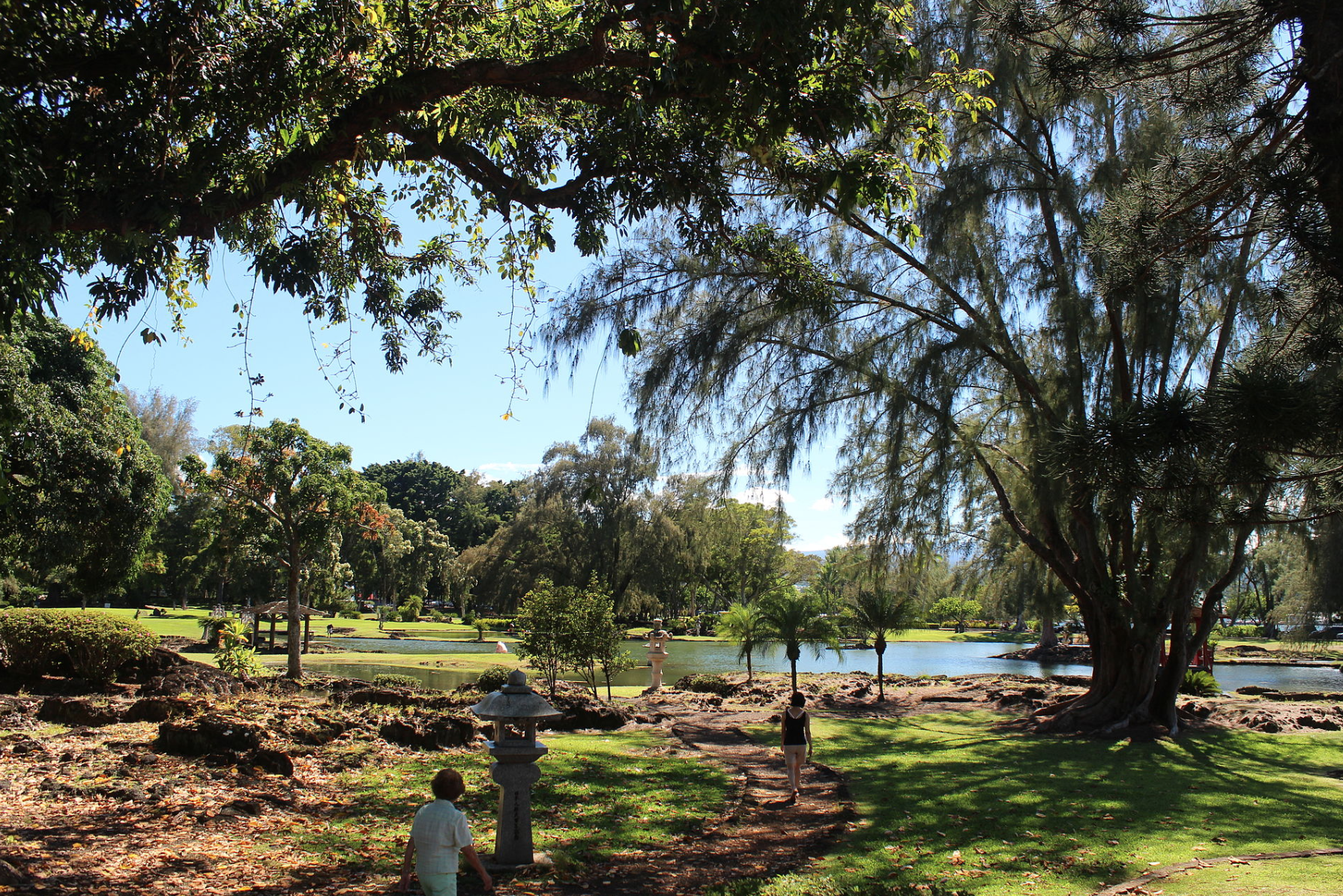The other day, when Richard found himself sitting on a yellow school bus surrounded by a bunch of fifth graders dressed in red shirts and Santa hats, he says he looked around and thought, “What am I doing here?”
Sounds like it took him only moments, though, to answer that question.
What was he doing there? Karyl Ah Hee’s Kaumana Elementary School class had invited him along on its annual excursion around Hilo to show appreciation to people who serve this community.
“The first thing that impressed me,” says Richard, “was that the principal came up before we left the school and talked to the children. He said, ‘Now you’re going to represent our school…’ He reinforced the teachers. It was a big deal.”
The kids took down posters they’d made and hung them in the windows of the bus.
First the bus took them to Hospice, where the kids gave out candies and told the people there how much they appreciate what they do.
The reactions, he says, were amazing. “I’m pretty sure that having done this is going to have a real impact on the kids’ lives,” he says, “because the feedback everywhere we went was incredibly positive. People were really touched by the kids and what they do.”
Then to the fire station. “They brought everybody out and maybe three kids gave a presentation,” he says. “It was a talk about their FISH philosophy, making people smile, making people’s day. That sort of thing.”
The FISH philosophy, according to the handout the kids gave (with candies) as they went around Hilo, began at Pike’s Place Fish Market in Seattle.
It is used as a business philosophy, but we have adopted it into our classroom. We have NO class rules…we swim with the FISH. Philosophy for life!
The FISH PHILOSOPHY contains four components:
Choose Your Attitude. You decide your attitude. No one can select it for you; choose a grand one. Even if your day is not going as planned, make the best of it! Be proud of your choice!
Be Present. Really focus on what you are doing or the conversation you are having. Don’t let others interrupt, don’t work on the computer or answer the phone when you are talking with someone. Be in the moment!
Play. This means to do whatever you need to do with a positive attitude. Even it it’s something you don’t enjoy as much. If you have to do it, make the best of it! Give it your ALL!
Make Someone’s Day. This is the most important and easiest component. It means to make someone feel great! Look for situations where you can help: a simple smile, holding a door open, a wave, or a “hi” or “good morning” can do the trick! Help someone in need. The feeling inside is wonderful!
The small information sheet ends with this:
We CHALLENGE you, Hilo! After learning about the FISH philosophy…Go and out Make Somebody’s Day. “We’re striving for a better Hilo, One heart at a time!”
If YOU made somebody’s day, we’d love to hear about it.
Our address: Kaumana Elementary School
Attn: Mrs. Karyl Ah Hee
1710 Kaumana Drive
Hilo HI 96720
Richard was impressed that when they got to the police station, there was the police chief, the assistant chief, and all the police officers sitting in a classroom. “They made a special point of bringing in all the detectives, who were in street clothes,” he says. “It was impressive that they really acknowledged how important it was by bringing everybody in. Everybody was there. The same at the fire station.”
“At the police station, there was this helicopter pilot with Operation Green Harvest, who has 40 years in the National Guard. He said he landed at Kaumana School one day in conjunction with the detectives, and the kids there showed him so much respect he remembered it. He said he’d never seen it before. He asked if he could speak to the kids, and he gave a heartfelt talk with tears in his eyes. I thought, ‘Whoa. There’s really something special going on at Kaumana Elementary.’”
Richard says he is impressed, too, with teacher Karyl Ah Hee.
“She’s a very dynamic person,” he says. “What it all really gets down to is that there are teachers like that, all over, but people largely don’t know. It’s good to see them, because you kind of know it intuitively. When you’re a kid you run across teachers like that, who have such a strong impact, but to actually see it as an adult is great.”
He also talked about how reassuring it is that this sort of thing goes on. “And not only in one school. We know it goes on at Keaukaha School, and at other schools. It is so apparent that when people say that there is something wrong with our educational system, it is not the teachers that are the problem. I’ve seen too many dedicated teachers who, like Karyl Ah Hee, work over and above what can reasonably be expected. They’re doing way above and beyond what they get paid for.”
He gave a little talk to the kids before he left. “I told them thanks for inviting me, because it was really that I was lucky to go, rather than that they were lucky to have me. I told them I was really proud of them. And that we had some apple bananas waiting for them when they got back. They liked that.”
“I’m so glad that I went along,” he says. “Our dedicated teachers are making good citizens of our young children, and I wish everyone could have seen what I saw.”


